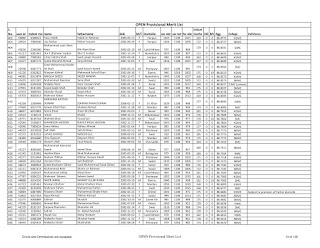Chap.23 Evolution
|
1. |
|
|
|
2. |
Who
wrote an essay on " Principle of Population"? (a)
Linnaeus (b) Lamarck (c)
Mathus (d) None of
these |
C |
|
3. |
Cuvier
contributed much to the science of: (a)
Botany (b)
Paleontology (c)
Zoology (d) None of
these |
B |
|
4. |
Lyell
published principles of: (a)
Population (b) Geology (c)
Ecology (d) None of
these |
B |
|
5. |
Darwin
collected 13 types of finches on: (a)
Java Island (b) None of
these (c)
Galapagos Island (d) Malta |
C |
|
6. |
Which
one is not related to Darwin's theory? (a)
Over production (b)
Use and misuse of organs (c)
Struggle for existence (d)
None of these |
b |
|
7. |
The
study of geographical distribution of organisms: (a)
Biogeography (b) Biophysics (c)
Bibliography (d) None of these |
A |
|
8. |
A
population is a localized group of individuals belonging to the same: (a)
Species (b) Genes ©
Family (d) None of
these |
A |
|
9. |
It
is the change in allele frequency by chance: (a)
Selection (b) Genetic
Drift (c)
Migration (d) None of
these |
B |
|
10. |
Selection
directly acts on: (a)
Phenotype (b) Genotype (c)
Allele (d) None of
these |
B |
|
11. |
The
smallest biological unit that can evolve. over time is (a)
Cell (b)
Individual (e)
Species (d) None of
these |
C |
|
12. |
The
random loss of alleles in a population is called: (a)
Mutation (b) Selection (c)
Gene Flow (d) Genetic Drift |
D |
|
13. |
Human
appendix, coccyx and nictitating membrane of the eye are: (a)
Vestigial Organs (b) Homologous
Organs (c)
Analogous Organs (d) Embryonic Organs |
A |
|
14. |
The existing species are the modified descendants
of pre-existing ones according to: (a)
Theory of Special Creation (b)
Theory of Organic Evolution (c)
Uniformitarianism (d)
Theory of Catastrophism |
B |
|
15. |
Using
the Hardy-Weinberg principle, which expression represents the frequency of
the homozygous recessive genotype? (a)
p2 (b) 2pq (c)
q2 (d) q |
D |
|
16. |
Which
one of the following would cause the Hardy-Weinberg principle to be inaccurate? (a)
The size of the population is very large (b)
Individuals mate with one another at random (c)
Natural selection is present (d)
There is no source of new copies of alleles from outside the population |
C |
|
17. |
The
study of birds is called: (a)
Ornithology (b)
Ichthyology (c)
Entomology (d)
Herpetology |
A |
|
18. |
Similarity
in characteristics resulting from common ancestry is known as: (a)
Analogy (b) Homology (c)
Evolutionary Relationship (d)
Phylogeny |
D |
|
19. |
The
parts of the body used extensively to cope. with the environment become
larger and stronger,
while those that are not used deteriorate was argued by: (a)
Charles Darwin (b) Alfred Wallace (c)
Carolus (d) Lamarck |
D |
|
20. |
Which
one of the following pairs represent analogous features? (a)
Elephant tusks and human incisors (b)
Insect wings and bat wings (C
Mammal forelimbs and bird forelimb (d)
Reptilian heart and mammalian heart |
B |
|
21. |
In
which of the following situations would evolution be slowest for an inter
breeding population?
Migration Selection Variation (a)
Absent Low Low (b)
Absent High High (c)
High Low High (d)
High High Low |
B |
|
22. |
Which
of the following ideas was not part of
Charles Darwin's theory of evolution by natural selection? (a)
Organisms produce more offsprings than the environment can support (b)
Variation between individuals arise by gene mutation (c)
Only those individuals that are best adapted to the environment survive and
reproduce (d)
Individuals compete for space and resources |
A |
|
23. |
All
of the following statements about evolution are true except: (a)
Evolution occurs more rapidly at some times than at others (b)
Evolution is directed by changes in environment (C)
Single organisms as well as populations do commonly evolve (d)
Evolution is not always a slow, gradual process |
A |
|
24. |
Which
of the following is a transition fossil? (a)
Reptile (b)
Amphibians (c)
Archaeopteryx (d) Apes |
|
|
25. |
Modern
horse belongs to the genus: (a)
Eohippus (b) Equus (c)
Mesohippus (d)
Pliohippus |
B |
|
26. |
All
of the following are true of homologous structures except: (a)They
demonstrate common ancestry (b)
An example is the wing of bat and the wing of a fly (c)
An example is the wing of bat and a person's arm (d)
They are not the same thing as analogous organs |
B |
|
27. |
The
age of earth according to scientific evidence is closest to: (a)
4000 years old (b) 6000 years old (c)4
million years old (d) 4 billion years
old |
D |
|
28. |
Which
of the following is an example of divergent evolution? (a)
Wildebeests separated from each other by a newly formed river are now
separate species (b)
Whales and fish have a streamlined appearance because they evolved in the
same environment (c)
Insects and the flowers they pollinate have evolved together over millions of
years (d)
Polydactyly, having extra fingers, is common in the amish of pennsylvania |
A |
|
29. |
The
gill pouches of mammals and birds embryos are: (a)
Supportive "ontogeny recapitulates phylogeny (B)
Homologous structures (c)
Used by the embryos to breathe (d)
Evidence for the degeneration of unused body parts |
B |
|
30. |
Darwin's
theory, as presented in "The origin of species", mainly concerned: (a)
How new species arise (b)
The origin of life (c)
How adaptations evolve (d)
The genetics of evolution |
A |
|
31. |
The
smallest biological unit that can evolve over time is: (a)
A Particular cell (b)
An Individual organism C)
A Species (d)
A Population |
C |
|
32. |
Selection acts directly on: (a)
Phenotype (b) Genotype c)
The entire genome (d) The entire gene
pool |
D |
|
33. |
A
gene pool consists of: (a)
All the alleles exposed to natural selection (b)
The total of all alleles present in a population ©
The entire genome of a reproducing individual (d)
All the gametes in a population |
D |
|
34. |
In
a population that is in Hardy-Weinberg equilibrium, 16% of the individuals
show the recessive trait. What is the frequency of the dominant allele in the
population? (a)
0.84 (b)
0.36 (c)
0.4 (d) 0.48 |
A |
|
35. |
Concept
of "Uniformitarianism was proposed by (a)
Louis Agassiz (b) George Cuvier (c)
Hutton and Lyell (d) Darwin |
C |
|
36. |
Fossil
record indicates that eukaryotes evolved from prokaryotes somewhere: (a)
2 million years ago (b) 2000 years ago (c)
20 million years ago (d) 2
billion years ago |
D |
|
37. |
Endosymbiont
hypothesis was first proposed by: (a)
Linnaeus (b) Lamarck (c)
Lynn Margulis (d) Wallace |
C |
|
38. |
A
structural change in the body of organism involving deviation from normal,
inducedin life
time of an individual due to certain change in environment or in function
i.e. use or disuse of an organ is called: (a)
Mutation (b) Selection (C)
Acquired Character (d)
Survival of the Fittest |
C |
|
39. |
How
many types of finches were observed by Darwin in the Galapagos Islands? (a)3 (b) 13 (C)
5 (d) 8 |
B |
|
40. |
Salient
feature of Darwin - Wallace theory is: (a)
Variation (b) Natural
selection (c)
Speciation (d) All of
these |
D |
|
41. |
What
does natural selection use as the raw material for better survivors? (a)
Variations (b) Mutations (c)
Both of these (d) None of these |
C |
|
42. |
Haeckel
proposed: (a)
Biogenetic Law (b)
Theory of Catastrophism (c)
Theory of Special Creation. (d)
Neo-Darwinism |
A |
|
43. |
The
red fox and the kit fox provide an example of two species that have
undergone: (a)
Convergent Evolution (b)
Parallelism (c)
Divergent Evolution (d)
Artificial Selection |
C |
|
44. |
Example
of genetic drift is: (a)
Bottleneck effect (b) The founder
effect (c)
Both of these (d) None of these |
C |
|
45. |
When
populations of a species that share the same habitat become reproductively
isolated from
each other, it leads to: (a)
Sympatric speciation (b)
Allopatric speciation (c)
Parapatric speciation (d)
No speciation |
A |
|
46. |
Life
originated: (a)
3 million years ago (b)
3000 years ago (c)
3.5 billion years ago (d)
30000 years ago. |
C |








Comments
Post a Comment